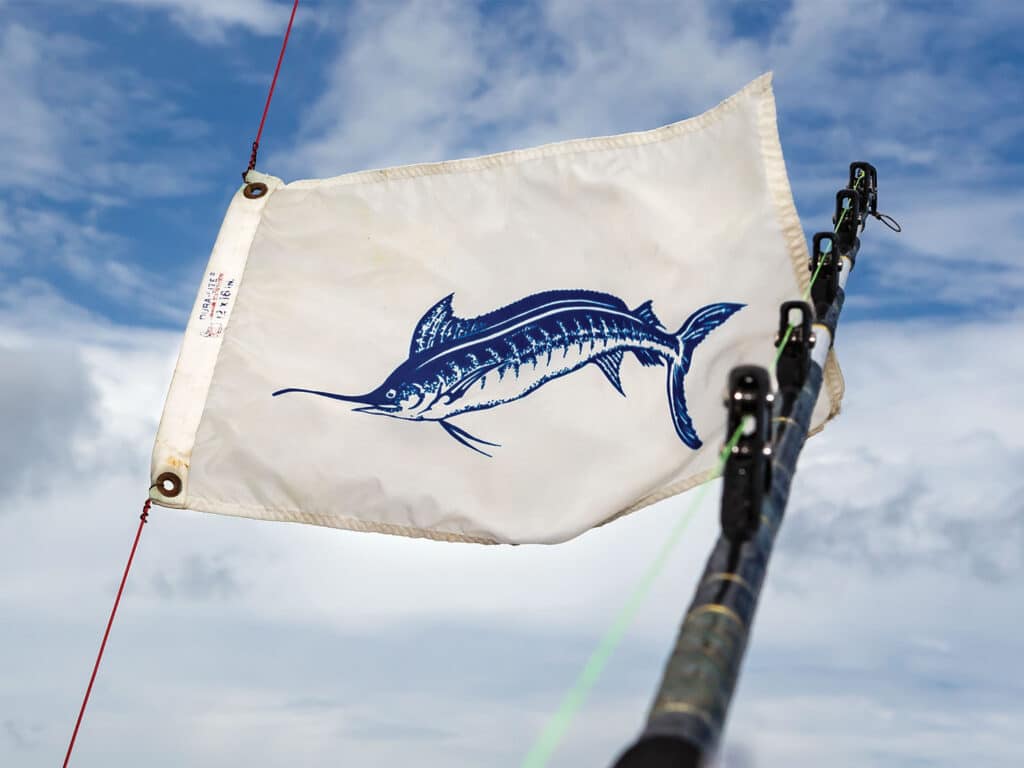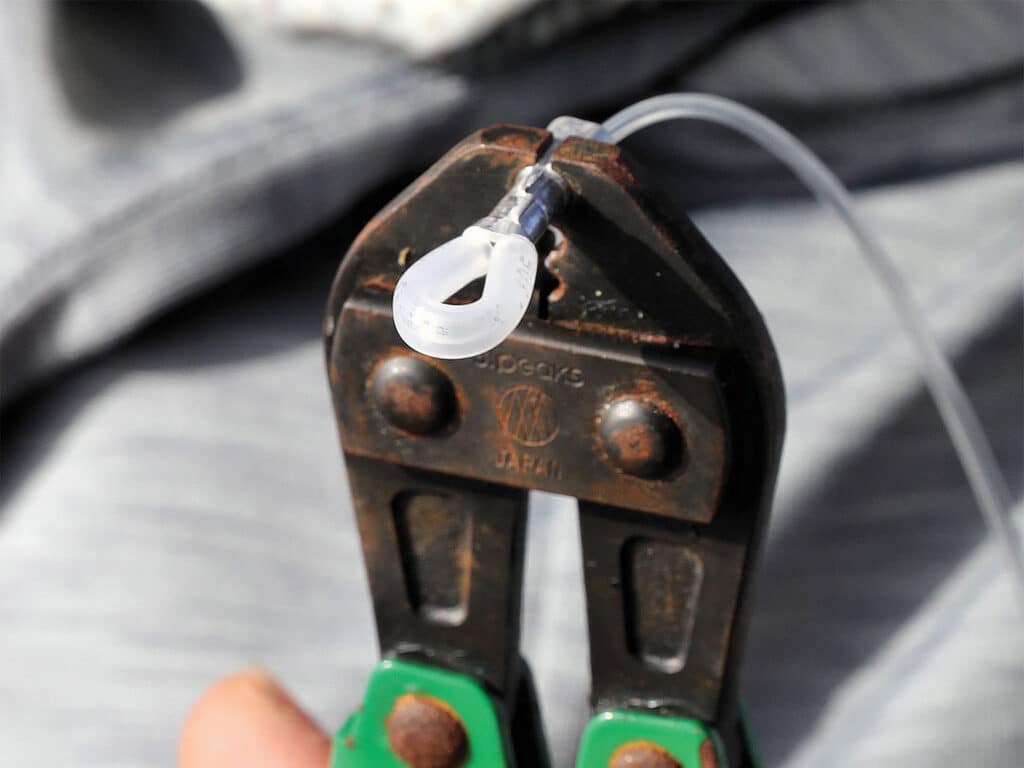
Special delivery: Sign up for the free Marlin email newsletter. Subscribe to Marlin magazine and get a year of highly collectible, keepsake editions – plus access to the digital edition and archives.
Imagine this: You’re hooked up to a large fish in the heat of battle. Sweat is dripping from your brow, your shirt is drenched, the line is straight up and down and you’re tapping into your best angling techniques to keep the fish inching your way. It’s a give-and-take, with you getting a few good punches in and gaining line little by little. But then, the fish has other ideas and suddenly takes it all back. You start to wonder if you set your drag correctly this morning, if you have enough pressure on the fish, or if you just need to be patient and wait for the fish to make a mistake. A conundrum at best; at worst, one of you is wearing out, and it’s probably not the fish.
The Three P’s
Anyone who’s fought big fish knows this situation all too well. From a large blue marlin on 130-pound-class tackle or a bigeye tuna on 50-pound stand-up, all the way to fighting your favorite inshore species on light spinning gear, knowing when to turn up the heat—or perhaps more importantly, when to back it off—makes all the difference in the world in the outcome of that brawl between you and the fish.
There is no doubt that if you want to beat a fish fast, you want to put pressure on it early and often. Knowing how to work the drag during the fight to take advantage of the opportunities that the fish gives you is crucial to ending a fight with a big one. It’s also important to know when it’s time to back off the drag to keep from pulling a hook or breaking them off.
The preparation for this all begins before you ever leave the dock. For starters, setting your drag’s presets is so easy to do, yet it is often overlooked and is extremely important when fishing with lever-drag reels. Setting your drags with a good scale every day is a rule that I live by. Your drag should be set at 25 to 30 percent of your main line’s breaking strength—at strike. Be sure to lay down some tape on the side of your reel along the entire drag curve. On this tape, use a permanent marker to note your drag setting in short increments to take out some of the guesswork during the fight. This will allow you to know exactly how much pressure you have on the fish.
It is also important to be sure every aspect of your tackle is in perfect working order. Make sure there are no nicks in the line or scars on the guides. If you have roller guides, be sure they are lubed and rolling smoothly. Check your crimps for perfection and re-crimp them if necessary. Replace any old swivels that look even remotely compromised, because your connections are going to be tested during any fights with big fish using heavy drag.

In the Beginning
On the bite, it is likely a fish is going to take a lot of line on its initial run. Remember, as more line comes off the spool and the amount of that line packed on your spool decreases, the amount of drag pressure is increasing. On top of that, a large fish has a lot of speed and power, and where your line is going is likely not straight at the fish. This belly in the line adds drag as well. As your spool is getting dumped, it’s not a bad idea to slowly back off of the drag to ensure you do not break off the fish right off the bat. Keeping the drag setting on the lower end until you settle into the fight will ultimately get you a more direct connection with the fish.
Whenever we are fishing for big game, the use of the boat will always come into play. The captain will likely assist the angler by chasing the fish in order for the angler to gain line. As you are able to collect more line on your spool and start to become directly connected to your fish, now is the time to advance the drag back to where you started. If you did not need to pull the drag back on the initial run, make the decision to fight it where you are or advance the drag up a couple of pounds depending on the line class. This is where the angler can truly settle into the fight and the battle begins.
War of Wills
During the fight, there are times when battles can be won without increasing the drag at all. But many times, when a fish feels heavy drag, it will decide to sound and go deep, and this is especially true of billfish. If you keep the drag light, the fish will stay on top and allow you and the boat the opportunity to get to them quickly. The lighter drag on a very active and jumping billfish usually also results in fewer pulled hooks.
Other times, the fish sounds quickly and the only way to work it up is to turn up the heat. As long as you are well connected to the fish, you can put a lot of drag on it. By well connected, I mean that both you and the fish are settled into a pattern, there is not much more than one-third of a spool out, and there is no belly in the line. This is your opportunity to be a true angler. If the fish starts to act strange, or in a way where it makes some strange movements, does lots of head shaking, or does anything abnormal from the established “pattern,” you need to back off of the drag a bit and allow the fish to get it out of its system and then settle back into a pattern again.
Read Next: Learn more on how to apply drag with heavy tackle here.
Fighting a big fish properly with heavy drag more often than not will allow you to catch the fish quicker. Putting the heat on a fish early and often essentially breaks the fish’s will and allows you to catch or release that fish much sooner than with a long-drawn-out battle. The longer the fight, the more that can go wrong. Plus, as you are fighting, your monofilament is under a tremendous amount of strain, getting stretched out and becoming weaker by the minute. Mono is also porous by nature, meaning that water can penetrate it, causing the line to weaken over time during a fight. Most importantly, if you plan to release the fish, quicker is always better for the fish’s health.
Overall, angling is mostly a “feel” kind of thing. Finesse is everything, so adjusting your drag at any time should always be done slowly, smoothly and deliberately. Doing so also helps mitigate drag slippage or lockup, especially during a long fight where the drag has done an extreme amount of work. While experience in numerous big-fish battles will give you the feel needed to know when to push the drag up or pull it back, I hope these words help you succeed on more occasions, regardless of experience.







